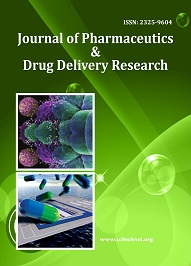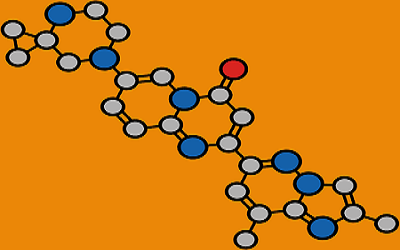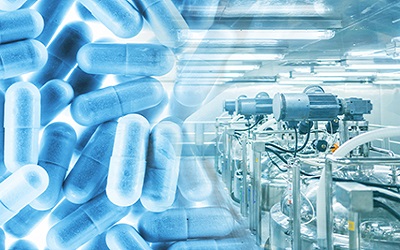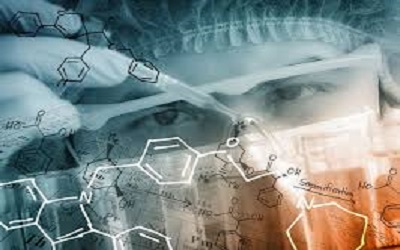About the Journal

Journal of Pharmaceutics & Drug Delivery Research (JPDDR) promotes rigorous research that makes a significant contribution in advancing knowledge for Drug Delivery Research. The journal includes all major themes pertaining to Pharmaceutical Technology, Biopharmaceutics, Pharmacokinetics, and Molecular Drug Design.
Pharmaceutics & Drug Delivery Research is a subscription based journal that provides a range of options to purchase our articles and also permits unlimited Internet Access to complete Journal content. It accepts research, review papers, online letters to the editors & brief comments on previously published articles or other relevant findings in SciTechnol. Articles submitted by authors are evaluated by a group of peer review experts in the field and ensures that the published articles are of high quality, reflect solid scholarship in their fields, and that the information they contain is accurate and reliable.
acceptance.Submit manuscripts at Online Submission System or send as an e-mail attachment to the at manuscript@scitechnol.com
The journal is using Editorial Manager System for quality in review process. Editorial Manager is an online manuscript submission, review and tracking systems. Review processing is performed by the editorial board members of Journal of Pharmaceutics & Drug Delivery Research or outside experts, at least two independent reviewers approval followed by editor approval is required for acceptance of any citable manuscript. Authors may submit manuscripts and track their progress through the system, hopefully to publication. Reviewers can download manuscripts and submit their opinions to the editor. Editors can manage the whole submission/review/revise/publish process.
Biopharmaceutics
The study of the physical and chemical properties of drugs and their properties and drug dosage as related to the onset of action of a drug, duration, and intensity of drug action.
The evaluation of the chemical and physical properties of drugs and the biological effects they produce. Biopharmaceutics as its dosage form as related to the onset, duration, and indication of its action.
Bioavailability
Bioavailability is said to be the amount of drug that is reaching into the systemic circulation or blood or the rate of extent of blood that is reaching into the blood is known as bioavailability.
Bioavailability alludes to the degree and rate at which the dynamic moiety (medication or metabolite) enters systemic flow, in this manner getting to the site of activity..
Contraindication
A Condition or symptom where to give a indication against the advisability or to give advice against a treatment.
Relative contraindication denotes that alert ought to be utilized when two medications or methodology are utilized together, it is worthy to do as such if the advantages exceed the danger.
Drug Delivery Systems
Drug delivery refers to approaches, formulations, and transporting a drug compound in the body as needed to administer a safety and therapeutic effect. It may induces site-targeting within the body, or it may involve facilitating systemic pharmacokinetic and pharmacodynamic properties i.e., administration, metabolism, excretion etc.
Medications have long been utilized to enhance wellbeing and expand lives. The act of medication conveyance has changed drastically in the most recent couple of decades and considerably more prominent changes are foreseen sooner rather than later.
Drug Design & Development
Abnormal biochemical and cellular changes caused by disease are identified, and then compounds that may specifically prevent or correct these abnormalities (by interacting with specific sites in the body) can be designed.
Most of the drugs in current use were discovered by experiments conducted in animals and humans. However, many drugs are now being designed with the specific disorder in view.
Drug Metabolism
Drug Metabolism is said to be process by which the body breaks down and converts medication into active chemical substances. Toxicology is a branch of Medical Science that deals with the effects of chemical compound used in diagnosis, treatment, or prevention of disease or other abnormal condition on the body.
Drug metabolism involves the enzymatic conversion of therapeutically important chemical species to a new molecule inside the human body.
Drug Properties
Drug properties includes molecular entity, molecular weight, chemical reaction, dissolution properties, and structural design of the molecule etc
Medicinal chemists in private industry, research centers and government labs; ADME scientists who develop assays and perform measurements, as well as instrument vendors and software companies in this area; and students in medicinal chemistry and pharmaceutical sciences.
Drug safety databases
Drug safety databases contain professional assessment of the potential of drugs. This database permits the risk-profit analysis of medicinal products taking under consideration new and emerging information, within the context of additive data.
Drug safety database offers programming of alerts for fast cases, follow-up cases and reports submission to fulfill regulative timeline compliance.
Drug Safety Information maintenance
Drug Safety Information maintenance maintains periodic report preparation method so as to enable the surveillance and signal detection that allows for the delivery of greater patient safety.
Drug Targeting
Drug targeting is the art of science where the drug delivery is aiming for delivery of the particular compound to a particular tissue or a part of the body.
Targeted drug delivery system is a special form of drug delivery system where the medicament is selectively targeted or delivered only to its site of action, or absorption and not to the non-target organs or tissues.
Drug Stability
Drug stability involves the length of the time a drug regains its properties without loss of potency; usually referred to as shelf life.
Drug stability is to maintain the physical, chemical, therapeutic and microbial properties during the time of storage and usage by the patient.
Industrial Pharmacy
Industrial Pharmacy is a branch of pharmacy which includes manufacturing, development, marketing, distribution of products of formulations will takes place. Industrial pharmacy has 2 research areas those are pharmaceutical industry and pharmaceutical technology.
The research topics are focused on solving current general problems in pharmaceutical industry, such as formulation and characterization of sticky amorphous drugs, problem-solving for pediatric medicines and miniaturization of manufacturing processes.
Molecular design
Molecular design of a drug involves the molecular modeling by various researches, and also involves the chemical and structural changes in the modeling of molecule or compound.
Molecular Modeling allows scientists to use computers to visualize molecules means representing molecular structures numerically and simulating their behavior with the equations of quantum and classical physics.
Nanopharmaceutics
Nanopharmaceutics can be defined as the science that applications with the implementation of the standards of nanotechnology in pharmaceutics. These conveyance frameworks, in light of their size impact, are equipped for changing the properties of a medication, including their bioavailability, biodistribution and pharmacokinetics.
Nanomaterials, with their one of kind size-subordinate physical and synthetic properties, have indicated promising focal points as medication and quality conveyance vehicles, ultra-delicate intracellular identifiers and novel helpful medications. Nanopharmaceutics is one of the controls that will advantage the most from this innovation.
Pharmaceutical Technology
The application of scientific knowledge or technology to pharmacy, pharmacology, and the pharmaceutical industry is said to be the Pharmaceutical Technology.
Pharmaceutical technology implies to the advancements of modern technology towards the pharmaceutical field in the area of manufacturing, research, clinical and analytical and many more.
Pharmaceutical Nanotechnology
Nanotechnology is a multidisciplinary field where the joining of fundamental sciences and connected controls like biophysics, molecular science, and bioengineering. It has made high impact effect in different fields of solution including cardiology, ophthalmology, endocrinology, oncology, pulmology, immunology etc.
Various new sub-atomic elements (NMEs) chose for full-scale improvement taking into account their wellbeing and pharmacological information experience the ill effects of undesirable physicochemical and biopharmaceutical properties, which prompt poor pharmacokinetics and dispersion after in vivo organization.
Pharmaceutics
Pharmaceutics is a branch of pharmacy which deals with formulation, compounding, dispensing, of the pharmaceutical ingredient. The entire drug medicament possesses the therapeutic effect.
Pharmaceutics is the interdisciplinary course in which the research and preparation, manufacturing of pharmaceutical components will takes place, starting from the drug design and to marketing all steps are crucial to drug to develope.
Pharmacokinetics
Pharmacokinetics is the study of absorption, distribution, metabolism, and excretion of drugs.
The procedures of retention, dispersion, biotransformation and digestion system, tying and end/discharge of a medication or immunization, which compares to the development of a remedial however an organic framework, as identified with the rates at which these occasions happen.
Pharmacotherapeutics
Pharmacotherapeutics is the science where the study of therapeutic uses and effects of drugs takes place.
Medications don't act in the same route in all people, and patientto-quiet variability in medication reaction is exceptionally regular. Helpful variability may be brought about by contrasts in patient body size and organization, age, sickness, natural components, and hereditary impacts.
Pharmacovigilance
Pharmacovigilance is a branch of pharmacology, relate to the collection, detection, assessment, monitoring and prevention of adverse effects or side effects of pharmaceutical products or formulations.
The major goal of this activity is to improve the safe and rational use of medicines, thereby improving patient care and public health.
Prodrug
A class of medications, at first in idle frame, that are changed over into dynamic structure in the body by typical metabolic procedures.
A prodrug must undergo chemical conversion by metabolic processes before becoming an active pharmacological agent. Initially a prodrug is administered as in inactive form.eg: cyclophosphamide (inactive)- Cytochrome P-540(active).
Side effects
The unintended effect of any drug that induces any reaction or causes harmful effect to body.
A reaction is typically viewed as an undesirable auxiliary impact which happens not withstanding the craved restorative impact of a medication or drug.
*2016 Journal Impact Factor is the ratio of the number of citations achieved in the year 2016 based on Google Search and Google Scholar Citations to the total number of articles published in the last two years i.e. in 2014 and 2015. Impact factor measures the quality of the Journal.
If ‘X’ is the total number of articles published in 2014 and 2015, and ‘Y’ is the number of times these articles were cited in indexed journals during 2016 then, impact factor = Y/X.
Fast Editorial Execution and Review Process (FEE-Review Process):
Journal of Pharmaceutics & Drug Delivery Research is participating in the Fast Editorial Execution and Review Process (FEE-Review Process) with an additional prepayment of $99 apart from the regular article processing fee. Fast Editorial Execution and Review Process is a special service for the article that enables it to get a faster response in the pre-review stage from the handling editor as well as a review from the reviewer. An author can get a faster response of pre-review maximum in 3 days since submission, and a review process by the reviewer maximum in 5 days, followed by revision/publication in 2 days. If the article gets notified for revision by the handling editor, then it will take another 5 days for external review by the previous reviewer or alternative reviewer.
Acceptance of manuscripts is driven entirely by handling editorial team considerations and independent peer-review, ensuring the highest standards are maintained no matter the route to regular peer-reviewed publication or a fast editorial review process. The handling editor and the article contributor are responsible for adhering to scientific standards. The article FEE-Review process of $99 will not be refunded even if the article is rejected or withdrawn for publication.
The corresponding author or institution/organization is responsible for making the manuscript FEE-Review Process payment. The additional FEE-Review Process payment covers the fast review processing and quick editorial decisions, and regular article publication covers the preparation in various formats for online publication, securing full-text inclusion in a number of permanent archives like HTML, XML, and PDF, and feeding to different indexing agencies.
 Spanish
Spanish  Chinese
Chinese  Russian
Russian  German
German  French
French  Japanese
Japanese  Portuguese
Portuguese  Hindi
Hindi 





